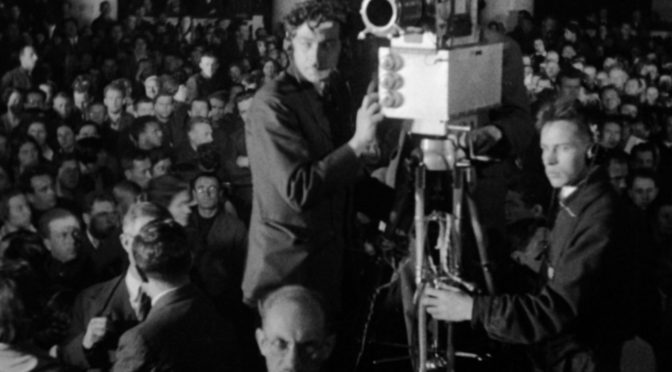 The year is 1930. Stalin has been in charge of the Soviet Union for the best part of a decade, and the negative impacts of his policies, in concert with the Great Depression, have left the country in a state of paranoia. Afraid of potential unrest, the authorities decide to distract the populace – by putting on a show…
The year is 1930. Stalin has been in charge of the Soviet Union for the best part of a decade, and the negative impacts of his policies, in concert with the Great Depression, have left the country in a state of paranoia. Afraid of potential unrest, the authorities decide to distract the populace – by putting on a show…
And what a performance it was. In order to engage the populace, the audience is drawn in by tales of sabotage, espionage and the international overthrow of the state, while the performers take their places. Though they may be reading from scripts, the defendants are palpably nervous, given the likely impact on their families should their performance fail to convince. The prosecutor, meanwhile, is less of a lawyer than a politician at a rally, denouncing the crimes supposedly committed against the state. As for the chairman of the jury, the cameras capture his face, in the style of Big Brother, posturing and passing sentence in a trial whose outcome has long been decided. As for the audience, they are brought in by soldiers, and sit passively throughout the trial, visibly bored. When the moment is right, however, they spring to life, decrying the defendants both in the court and in the streets. The charges are explained to them like a teacher to a pupil, repeated over and over until there can be no doubt of the defendants’ guilt, which they are only too happy to admit. As a viewer looking on, you too are drawn into this theatre of state oppression, almost complicit in the events of 90 years ago.
This is quite an achievement, given just how ludicrous the trial is. It is full of contradictions, something director Sergei Loznitsa is keen to highlight. A tranquil winter’s morning soon gives way to the oppressive interior of the court, which itself is as an older building ensnared in the cables of contemporary technology. The trial starts with at least the air of the real thing, as the defendants give their pleas. Beyond this, it becomes ever more farcical, as the nature of the supposed conspiracy is revealed. The group the defendants supposedly ran – the Industrial Party – is described as labyrinthine, with influence in nearly every sector of manufacturing, but is derided as being highly ineffective. The threat to the Soviets is made to sound serious, but the prosecutor describes its leaders as politically naive. This artifice in the trial becomes even more evident when a defendant, Ochikin, pleads guilty before the chairman has finished speaking, while another states, of their punishment, that “apparently, I deserve it.” As in Iannucci’s THE DEATH OF STALIN, the system can be both terrifying and faintly ridiculous, all at once.
Of course, all this happened long ago. The real achievement behind this film in the painstaking archival research, no mean feat, in order to bring this footage to light. From there, the film has been restored to give our view of the past much greater clarity, showing a different Moscow in a different era. The sound restoration also contributes to the oppressive nature of the trial itself, the general hubbub cutting away during the carefully choreographed movements of the proletariat. Together, this enables Loznitsa to give the show trial one final encore, playing the highlights of this eleven-day performance. Even this two-hour segment demonstrates just how effectively the public and defendants were ground down by the process, something which also extends to contemporary viewers.
As a historical artefact demonstrating the manipulation of public opinion and suppression of political opponents during the Soviet era, little could possibly top THE TRIAL. It makes its audience want to research more about the trial, and the broader context it sits in, even though it could do more to demonstrate this within the documentary itself. While, by its very nature, its broader appeal may be limited, it uncovers a side of history that the people of the West are unlikely to have seen before.

